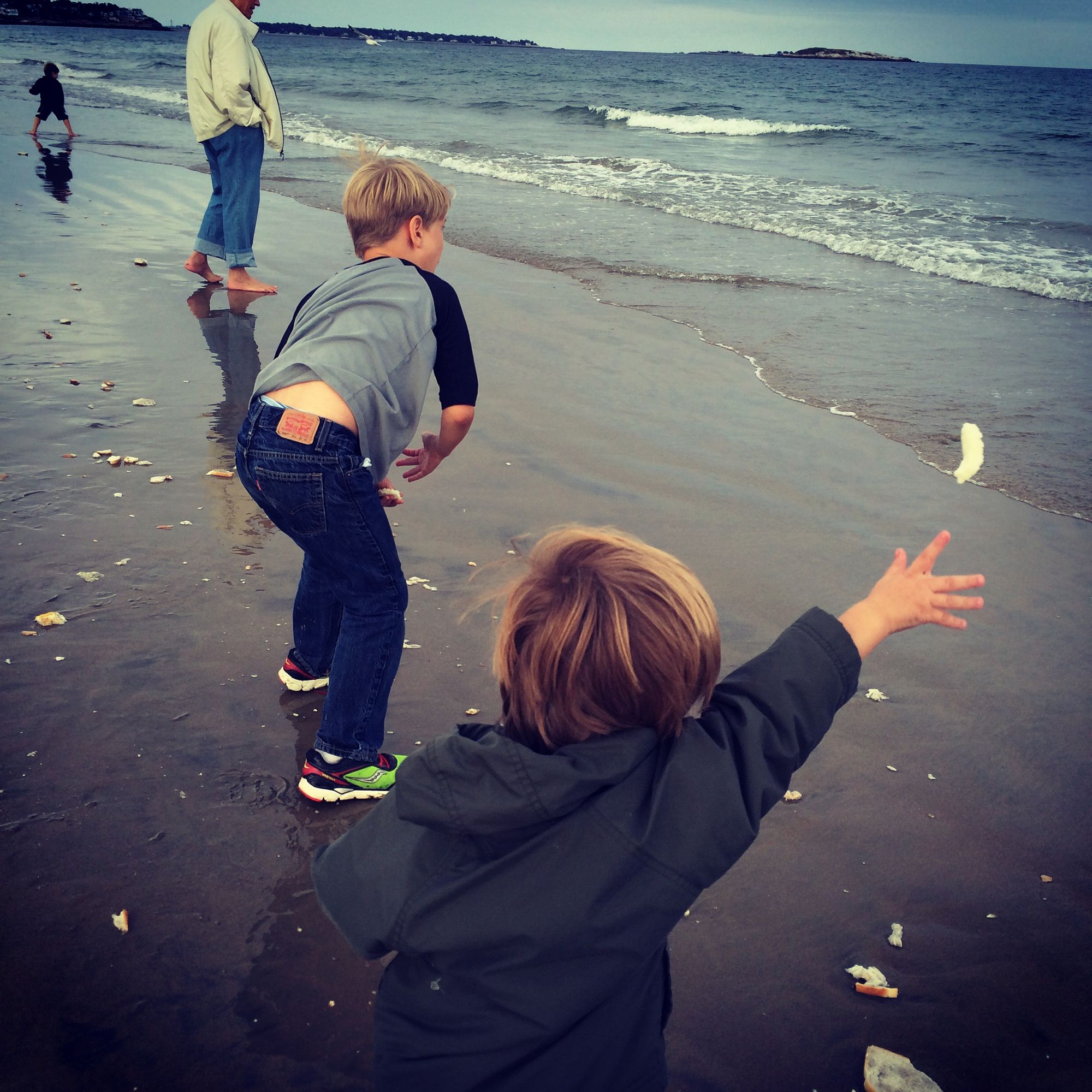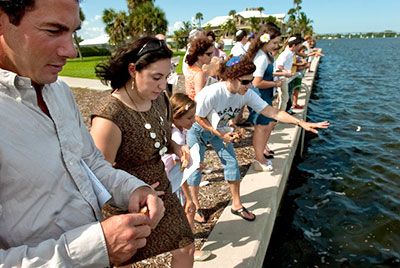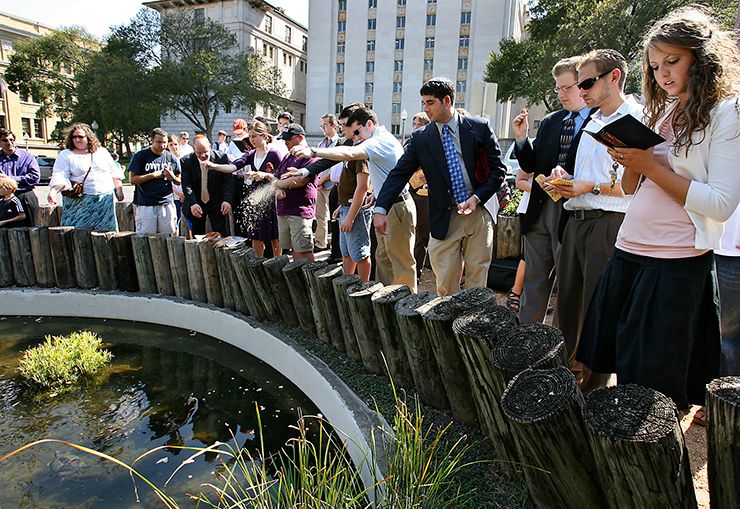Shabbat Gathering: Tashlich: Take me to the river.

Dear Chevra, as is our custom, we will gather tonight at 5.45p ct to welcome Shabbat. These are the coordinates:
Zoom
Meeting ID: 963 5113 1550
Password: 1989
Phone: +1 312 626 6799
(To unsubscribe from the newsletter, click the link at the very bottom of this email.)
Here we go.
Tashlich is a weird little ritual. In some ways, it feels a little pagan to feed your sins to the fishes. In other ways, it has deep connections with our Jewish texts and helps us focus on repentance. Let’s take a look at it.
How to do Tashlich.
- Reflect on your sins.
- Find a body of water that might contain fish.
- Bring something with you to throw into the water such as a leaf, a stone, a stick.
- Read this from Micah 7:18-20
Who is a God like You,
Forgiving iniquity
And remitting transgression;
Who has not maintained God's wrath forever
Against the remnant of God's own people,
Because God loves graciousness!
God will take us back in love;
God will cover up our iniquities,
You will hurl all our sins
Into the depths of the sea.
You will keep faith with Jacob,
Loyalty to Abraham,
As You promised on oath to our fathers and mothers
In days gone by.
5. Throw whatever it is you brought with you into the water.
Simple.

Fish don’t have eyelids.
One of the reasons we believe the ritual needs to take place in a body of water where there might be fish has to do with its symbolism. Consider this from Aish.com: “Since fish have no eyelids, their eyes are constantly open. This symbolizes God's constant protective watch over the Jewish people.”
Scraps of paper? Breadcrumbs? Leaves, Rocks, Sticks?
The first time I observed Tashlich, I wrote my sins on a piece of paper and then tossed the paper into the ocean. Later, thinking a little bit more about the environmental impact of that, I threw bread into the water. And later, with even more thought given to the impact on the animals in the water (I learned that throwing bread into the water created some damage) my own ritual has evolved into throwing a leaf or a stone or a stick into the water. It might not be as rigorously symbolic as throwing the names of our sins into the water, but it’s also one less way I’m creating harm.
How did Tashlich originate?
According to some, Tashlich dates back to Abraham and Isaac. In midrash, Satan causes a river to rise up, impeding the path of Abraham and Isaac to the Akeida. The two wade in up to their necks and then ask Hashem to help them across. Hashem immediately causes the river to dry up and Abraham and Isaac are back on their way.
My observances.
The first time I observed Tashlich was when I was a member of Community Synagogue in Rye, New York. It was the second synagogue I belonged to and was on Long Island Sound. I’ve also observed Tashlich at an arroyo in Pleasanton, Calif., a lake in Berkeley, and a lake in Madison. I think Tashlich is a charming, touching, and meaningful ritual.

The Tashich ritual feels like something ancient, and perhaps it is. There is something essential about standing in front of a body of water, saying a prayer, and then connecting to the water and the life it represents. We cast our sins into the water, let the fish read them and eat them, and then begin to have them absolved.
Simple progress.
If only it were all that simple as throwing our sins into the water. There’s a lot of hard work we do to clear the sins we’ve committed against others and the sins we’ve committed against G-d. I think the point is whether it’s easy or hard, we need to cast off our sins or run the risk of those sins weighing us down and restrict our movement, our progress.
And may it be for all of us a blessing.
See you tonight!
Gut Shabbes!
All my love,
brian.
PS
On Rosh Hashanah and Yom Kippur, we recite/sing Unetaneh Tokef. I just finished taking a class from the UnYeshiva and found out about this poem by Rabbi Miszler. I'm passing it along to you as I think it is very special.
An Alternate Unetaneh Tokef
by Rabbi Joseph B. Meszler
On Rosh HaShanah it is written, on Yom Kippur it is sealed:
That this year people will live and die,
some more gently than others
and nothing lives forever.
But amidst overwhelming forces
of nature and humankind,
we still write our own Book of Life,
and our actions are the words in it,
and the stages of our lives are the chapters,
and nothing goes unrecorded, ever.
Every deed counts.
Everything you do matters.
And we never know what act or word
will leave an impression or tip the scale.
So if not now, then when?
For the things we can change, there is t’shuvah, realignment,
For the things we cannot change, there is t’filah, prayer,
For the help we can give, there is tzedakah, justice.
Together, let us write a beautiful Book of Life
for the Holy One to read.
PPS
Deborah Sacks Mintz is the director of Tefillah and Music for Hadar and has a new track, Zokhreinu L’Hayyim, out on Bandcamp. Zokhreinu is part of the High Holy Day liturgy and Mintz has a fresh, new take on this ancient song. Zokhreinu is a follow up to her profound earlier album, The Narrow and the Expanse. Zokhreinu was recorded at the beautiful, 200-year-old B’nai Jeshurun synagogue in New York City.